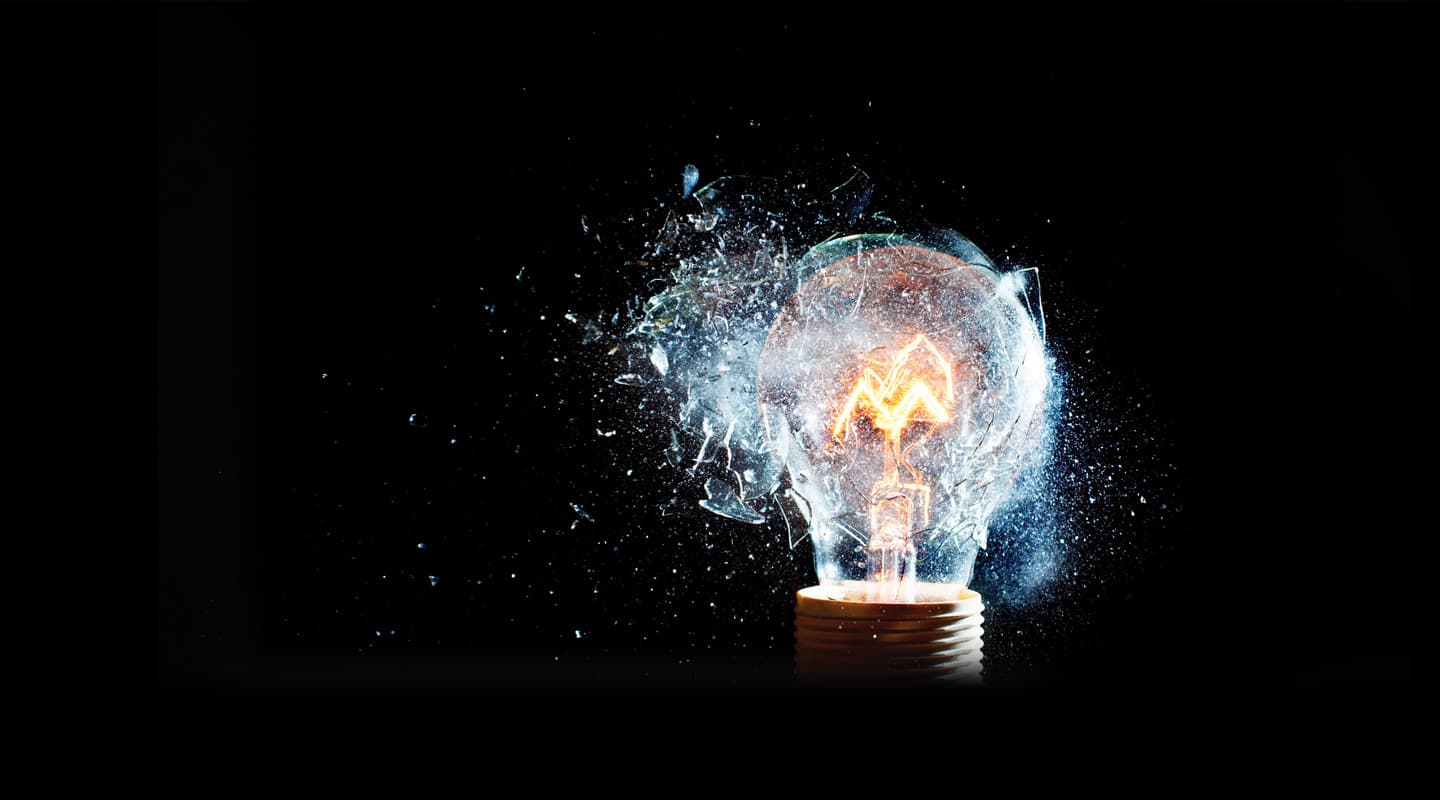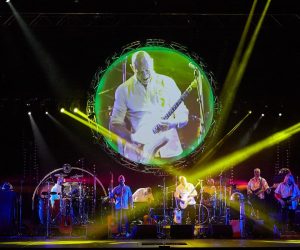
Not So Easily LED
Rumours of the death of incandescent light sources could be greatly exaggerated.
Text:/ Paul Collison
I keep hearing that the incandescent light source is dead – a light source that’s shuffled off this mortal coiled-coil. But I wonder if perhaps we are being actually being let down by our lighting manufacturers.
Is LED technology really that close to replacing traditional incandescent light bulbs that we can walk away from an attachment we’ve had with hot glowing things since man first stumbled across fire? An emotional connection we’ve had since well before the invention of the wheel, before even sliced bread?
Is it concerning that our manufacturers are abandoning incandescent sources in favour or LED technology, or is it yet another case of the unstoppable march of Technology. As the compact disc was to the vinyl microgroove record, will we slowly see the quality of our ‘tools’ degraded in the name of progress?
PLAYING WITH FIRE
Humanity’s affection for fire is deeply embedded in our DNA. Most people can spend hours staring into a fire or looking at a candle in some sort of mesmerised state. The very essence of our connection to incandescent light sources arises from those same feelings, albeit that an electrically-heated tungsten wire is lot more stable and controllable than a naked flame. We are drawn to it like the animals that we are.
I’ve never seen someone enamoured by the sensation of an LED source. Sure people get excited at the energy efficiency, technology and possibilities that LEDs present, but we don’t have that built-in resonance a simple 60W lamp can evoke. Like watching a fire, one can watch an incandescent lamp heat up and emit light with wonder. The characteristics the globe takes on as the filament heats and cools bring a similar complexity, dynamic flow and rich range of spectral colours that we see in fire. That sort of visual journey just doesn’t exist with an LED source. At least not at anything approaching a practical cost, and even then, not without some outboard processing.
KELVINS AIN’T KELVINS
The big problem is that LED source manufacturers are so caught up in getting an LED source to look convincingly like a tungsten source at 2800 to 3200K they’ve overlooked that many of us actually use the variations of colour along the tungsten dimming curve as part of the palette for our art. Not just in shows or on camera either, but in our lounge rooms and offices. My hallway has expensive LED downlights that dim: great. However, when they dim, I don’t get that same warmth I have in my lounge room when those venerable incandescent globes are dimmed. Sure, my hall is darker when I dim it, but the mood barely shifts. Unless I want to go to the effort of colour mixing RGBAW LEDs in my hall to simulate that colour (but even then, not the colour rendering), I’m not going to recreate that feel. Certainly not in an efficient way that doesn’t make me look like the lighting geek that I may be.
So, are we just romanticising the incandescent sources, or is there some technical logic behind the Don’t Make Me Stop Using Incandescent Light movement? Let’s begin with the colour spectrum. An incandescent lamp by its very nature as a hot glowing object emits the full visible colour spectrum in varying amounts, which is what the colour temperature scale measures. By definition, an incandescent source has a Colour Rendering Index (CRI) of 100 because it can reflect off (render) every colour present in an object it is illuminating. During a fade up or down of a tungsten source, while the relative mix of the spectral colours may vary (colour temperature shift), the whole visible spectrum is still being emitted.
Every non-incandescent type of light source such as fluorescents, metal halides, and especially LEDs, produce their light by some physical principle other than simply heating something up, and consequently don’t produce the entire colour spectrum in ‘natural’ proportions. Most of these sources are substantially more efficient at producing light than incandescence due to heating, but to make them useful for tasks such as viewing coloured objects like people, artworks, full-colour images, and food, we have to resort to various tricks to approximate the light that our brains have evolved to see. The CRI of a light source is an attempt to measure how well those tricks work.
Any LED, even one with a relatively-good CRI, may have obvious spikes and troughs in its output spectrum. Whilst some of these shortcomings may not be very noticeable to the human eye because our brain compensates for them, they are often quite obvious on camera where the film or the sensor chip can’t be as easily fooled. To make matters worse, LEDs often vary in colour output between manufacturing batches, even on the same model of light, depending on the batch they were sourced from and when they were purchased.
NEVER MIND THE EMOTIONS: FEEL THE TECH
Then there are the technical aspects of LED application. Take for example a community theatre group. Perhaps they have 16 luminaires to play with – a mixture of incandescent fresnels and profiles. If the local council gives them a grant to buy six new high-efficiency fixtures using a source such as LED (that has a constant colour temperature, rather than the varying colour of an incandescent lamp on a dimmer), will those new sources sit equally among the others? It’s likely they will be so different that those new fixtures will always need to perform exclusive duties so they don’t stand out as being different types of lights.
Let’s shift perspective and look at a video production studio. Is it possible to blend new light sources that not only have a different control system (internal dimming control as opposed to traditional external dimmer control) but also have drastically different colour temperatures across the dimming spectrum? Well, in a pinch, sure they can. However, the question arises, does your average studio want to spend hours a week shuffling different sources around the grid to perform the same jobs? Do they want to sacrifice the ability to re-purpose a light on a whim? Not really.
RIGHT THERE ON MY TV
So in order for a television studio to move to predominantly LED-based sources, a complete swap out of almost the entire fixture stock (or at the very least a high percentage), and a complete infrastructure change needs to be implemented. Dimming will need to be replaced by direct power sources, or at the very least switchable line/dimmed modules. More data distribution infrastructure needs to be installed to send control data directly to the fixtures rather than a dimmer room. Then of course there is the training and experimentation that needs to take place in order to make a complete transition to new sources.
That’s a lighting change even more fundamental than the mandatory conversion from monochrome to colour in the early ’70s, when the changeover mostly involved swapping older tungsten lamps for their more modern tungsten halogen equivalents. Can anyone in the broadcast world see that kind of change happening voluntarily any time soon? In Australia, we can’t even manage to broadcast in HD properly, so how on earth can we make a fundamental change to our studios like that?
I asked Andrew Veitch, head of lighting for the Nine Network in Sydney, what he thought about a slow conversion to LED sources in his studios. His response: “It’s not going to happen. There is too much infrastructure to change for a slow transition. It would need to be a 100 per cent conversion, and even then, there are still shortfalls in fixture variety with LED sources to completely fit out a multipurpose studio.” Andrew then pointed out, “If it was a small news studio or current affairs type studio then we could change over to that pretty easily. The London Olympic studio lit by Stuart Anderson was completely illuminated by LED sources, but that studio was small and the scope of work was limited.” I then asked him what he would do if he was building a brand-new multipurpose studio today. “I think you’d need to build it with the infrastructure to cope with LED sources,” he replied. “But, ultimately, if it was a multipurpose studio, it would have to work as a tungsten-based studio.”
FIXING A HOLE
Of course LED has a major place in our inventories. The mixing of LED, tungsten and discharge lamp sources has kept us entertained for many years and will for many more. The differences in the sources serve the variety of our stocks well. However, there is a gaping hole in our inventory becoming alarmingly bigger. That of the moving head incandescent source profile.
To my knowledge, the ETC Source Four Revolution is the only profile still on the market with this source, and it’s now over 10 years old. While it was never an amazing fixture, it does a job that seldom could be done by another fixture. I am amazed there is not a simple incandescent-based profile at an affordable price that can move and zoom and comes with shaping shutters. I can think of dozens of applications for such a light: schools, museums, retail, houses of worship, let alone theatres big and small.
How is it such a challenge to manufacture something like this? How is it that we’ve been asking manufacturers for something like this for 10 years or more, yet there is still nothing available? How could Vari-Lite get it so wrong with their incandescent moving head profile, the VL1000TI , and never try and improve on it? Why did Martin shelve its TP-1 project (the profile version of its TW-1 tungsten wash light) and why, oh why, have second-tier manufactures not leapt in to fill this void?
I have personally spoken to almost every major manufacturer of automated fixtures on the planet and discovered they have all shelved any plans to market a tungsten profile. Instead they are focusing on LED-based sources that will only emit light in the colour temperature range of 2800 to 3200K or higher. None are interested in recreating the colour temperature curve of a traditional tungsten lamp. Is that a concern? Is history repeating itself when consumers of audio blithely accepted the dreaded MP3, sacrificing quality for convenience?
We are all well aware of the benefits of LED: cooler fixtures, lower power consumption and far less maintenance. LEDs are firmly established in our art form and will be so for a long time to come. The question is: are we able to afford, ready to implement, willing, and most of all able to make that leap to the exclusive use of LED light sources without sacrificing quality?















RESPONSES